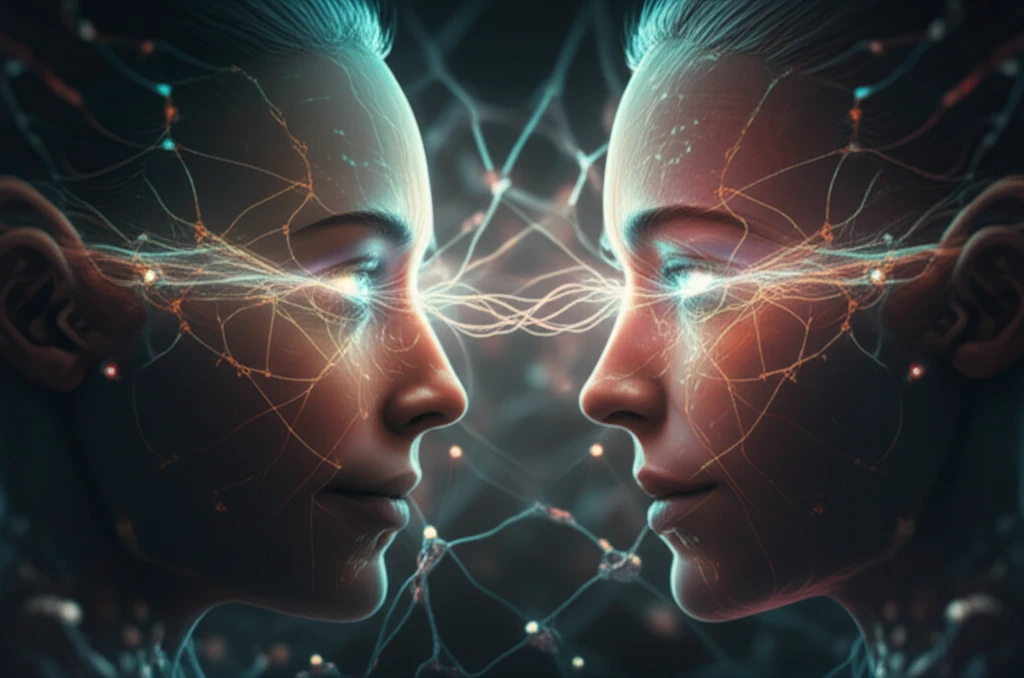
Unlock the Secrets of Connection: How Pupil Mimicry Reveals Social Intelligence
"New neuroimaging research confirms that pupil mimicry is not just a visual phenomenon, but a key indicator of social understanding and trust."
Have you ever noticed how, during a conversation, you unconsciously mirror the expressions or postures of the person you're talking to? This mirroring isn't limited to just gestures and expressions; it extends to something as subtle as the pupils of our eyes. Recent studies have illuminated a fascinating phenomenon known as pupil mimicry, where an individual's pupils dilate or constrict in response to the pupil changes of their interaction partner.
Initially, some researchers proposed that pupil mimicry was simply a response to changes in luminance, or brightness, in the other person's eyes. However, new research is revealing that this phenomenon is deeply intertwined with our social understanding and trust. A groundbreaking study published in PNAS (Proceedings of the National Academy of Sciences) demonstrates that pupil mimicry is not merely a visual reflex, but a key component of social interaction, influencing our trust in others and reflecting activity in brain areas associated with theory of mind.
The implications of this research are far-reaching, suggesting that pupil mimicry serves as a subtle yet powerful tool for social connection. By unconsciously mirroring the pupil size of others, we signal empathy and understanding, fostering trust and strengthening social bonds. This article delves into the fascinating world of pupil mimicry, exploring its connection to social intelligence, trust, and the intricate workings of the human brain.
The Science Behind Pupil Mimicry: More Than Just a Brightness Reflex

For years, scientists have observed the phenomenon of pupil mimicry, noting that individuals tend to mirror the pupil dilations and constrictions of those they interact with. Initially, some researchers hypothesized that this mimicry was simply a response to changes in luminance, the amount of light reflecting from the other person's eyes. In other words, they believed that our pupils adjusted in response to the brightness of the other person's eyes, without any deeper social meaning.
- Social Context Matters: The study found that the influence of pupil mimicry on social behavior, such as trust, is consistently moderated by social context. Factors like own-versus-partner ethnicity, species, or the cooperative or competitive nature of the interaction all play a role.
- Beyond Social Attention: The researchers argue that if pupil mimicry were solely driven by attentional mechanisms, then partners' dilating pupils should lead to higher social network activation regardless of whether participants mimic. However, the study revealed that pupil mimicry is essential for activating social brain networks.
- Looking Time Analysis: Eye movement analysis revealed no significant difference in looking times when participants observed a partner's dilating pupils compared to constricting pupils, suggesting that attention alone cannot account for pupil mimicry.
The Future of Connection: Harnessing the Power of Nonverbal Communication
The discovery that pupil mimicry is linked to social intelligence and trust opens up exciting avenues for future research and application. By understanding the neural mechanisms underlying this phenomenon, we can gain valuable insights into the complexities of human connection and develop new strategies for improving social interactions. Whether it's enhancing empathy in therapeutic settings or fostering trust in business negotiations, the secrets revealed by pupil mimicry have the potential to transform the way we connect with one another.
